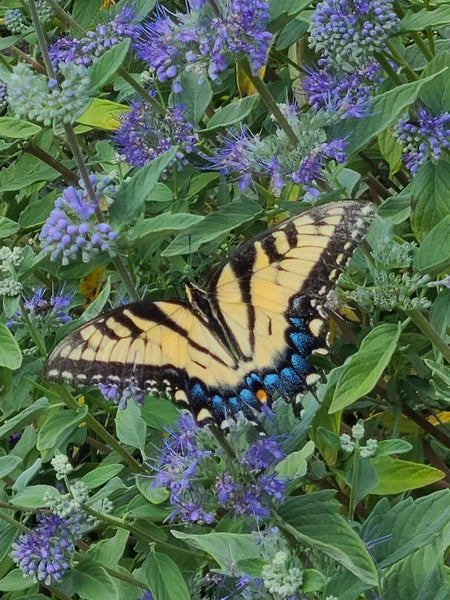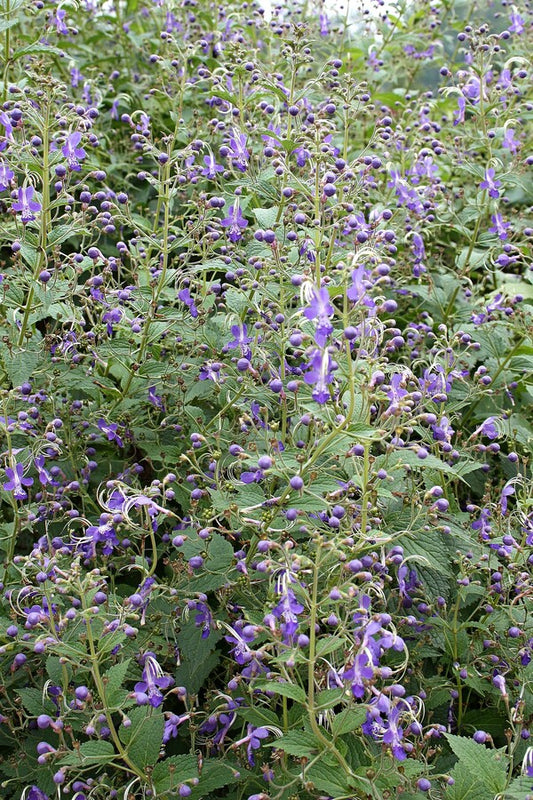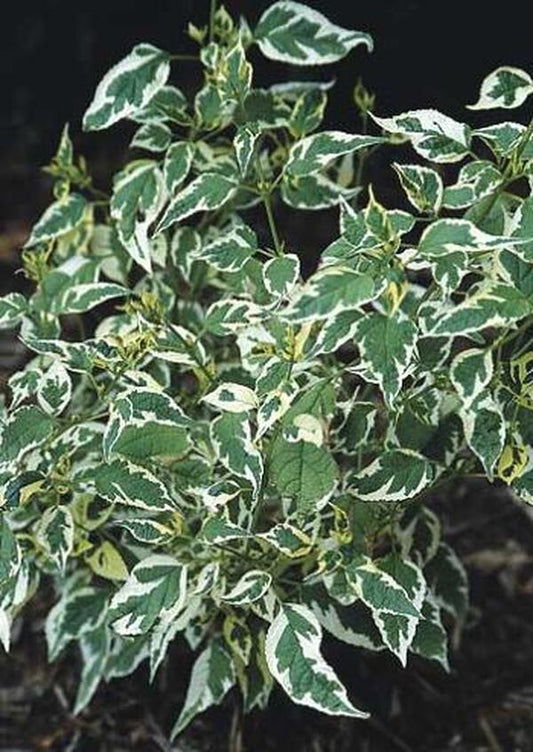The long-lasting, butterfly-attracting, blue-lavender flowers and deer-resistant (but funky smelling) foliage (often variegated) make caryopteris a garden designers dream come true.
-
Caryopteris x clandonensis 'Blue Empire' PP 30,494
Item #: 17594
Zones: 5a to 9b
Dormancy: Winter
Height: 72" tall
Culture: Sun
Origin: Hybrid
Pot Size: 3.5" pot (24 fl. oz/0.7 L)
Regular price $23.00Regular priceUnit price per -
Caryopteris divaricata 'Blue Butterflies'
Item #: 7518
Zones: 6b to 9b, at least
Dormancy: Winter
Height: 72" tall
Culture: Sun
Origin: Japan
Pot Size: 3.5" pot (24 fl. oz/0.7 L)
Regular price $22.00Regular priceUnit price per -
Caryopteris divaricata 'Snow Fairy'
Item #: 4807
Zones: 5a to 9b
Dormancy: Winter
Height: 24" tall
Culture: Sun to Part Sun
Origin: Himalayan Mountains
Pot Size: 3.5" pot (24 fl. oz/0.7 L)
Regular price $22.00Regular priceUnit price per
More Information About Caryopteris
Caryopteris, also known as bluebeard, is an Asian member of the verbena family with around a half-dozen species. Caryopteris species are rare outside of botanic gardens (Caryopteris divaricata is a popular exception) but there is a hybrid (C. incana × C. mongholica) called Caryopteris x clandonensis has become quite popular as a perennial for the sun garden, with increasing selections becoming available. The long-lasting, butterfly-attracting, blue-lavender flowers and deer-resistant (but funky smelling) foliage (often variegated) make caryopteris a designers dream come true. Blooming starts in the late summer and continues into fall.
Growing and Caring for Bluebeard Plants
Caryopteris plants prefer well-drained soil and can tolerate dry conditions once established, but do not tolerate heavy, wet soils. This is a great choice for a rock garden. Caryopteris is perfect for a mass planting, a low border, or a xeriscape garden. Maintenance is easy... simply cut back the stems in early spring to remove winter dieback... that's it.





